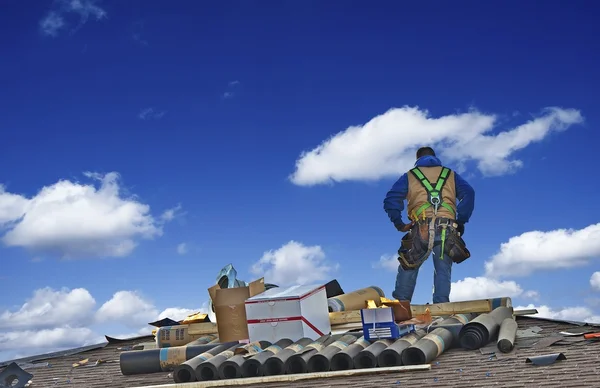Commercial roof leaks require immediate attention to minimize interior damage and reduce costly repairs. Tenants should follow a few steps to locate the source of the leak, contact a roofing company and cooperate with insurance agents to expedite repair.
Indications of a leaky commercial roof encompass wall/ceiling stains, water drips, and unpleasant odors. Seek Certified Roofing Services for professional resolution. Other signs include open roof penetrations, which occur when seals around HVAC units, gas lines, drains and electrical conduit break down due to harsh weather conditions or aging.
1. Damaged Flashing
A leaking commercial roof can cause water to puddle on the floor, discolor walls and erode ceiling tiles. It can also damage office equipment and personal belongings. If your building is experiencing this problem, you should take action right away.
Oftentimes, the source of commercial roof leaks is damaged flashing. These are thin metal pieces that are nestled on the edges and joints of the roof, protecting it from rain/water and other outdoor elements. Poor weather and age can cause them to crack or lose their seal, creating an easy path for water to reach the roof.
Leaks may also be caused by open penetrations in the commercial roof membrane. These include vents, drains, gas lines, HVAC units, and other systems that penetrate the roof. The seals around these areas may break down due to poor installation, harsh weather, and age.
2. Improper Drainage
Commercial roofs are designed with internal drain systems to prevent water from accumulating on the roof. Without proper maintenance, these drains can become clogged with debris and cause standing water on the roof. This not only accelerates roof deterioration but also adds weight to the building, which can damage the structure and lead to leaks.
In addition, standing water can create a perfect environment for mold and mildew to grow, which can affect indoor air quality and pose health concerns for your employees or tenants. Furthermore, electrical wires can be affected by moisture and short out, posing a fire hazard.
Leaks may also occur around open roof penetrations such as vents, drains, HVAC units, gas lines, and more. These could be due to improper sealing or the impact of harsh weather over time.
3. Damaged Shingles
The shingles that cover your roof serve as its first line of defense. When shingles become damaged, they weaken your roof’s integrity, paving the way for moisture infiltration and ceiling leaks.
Strong winds, sudden temperature changes, and aging can all cause shingle damage. Additionally, animals like squirrels and woodpeckers can puncture shingles to create nests or to access the interior of your home for food or shelter.
To replace a damaged shingle, start by locating the leak source and removing any debris that may be present. Next, slide your flat pry bar under the shingle directly above the damaged one and carefully lift it to expose the nails beneath. Remove the nails and then place a new shingle in its place. Secure it with roofing cement and make sure it lines up with the shingles above it.
4. Damaged Gutters
While commercial roofs are built to withstand a lot of stress, they’re not immune to damage. Some signs of a leaky commercial roof include visible signs of water damage, mold growth, rotted wood and more. It’s important to check for these symptoms regularly to avoid potential damage and maintain your building and property.
When gutters, drains and scuppers aren’t working properly, it can result in standing water on the roof’s surface. If left unchecked, this can lead to serious issues like extreme ponding water (which puts additional weight on the roof), cracks in concrete sidewalks and driveways, rotting porches and decks and more. Cleaning and repairing gutters on a regular basis will help prevent these problems.
5. Damaged Flashings
Commercial roof flashings are pieces of metal used around areas where the roof meets other structures on the building, such as chimneys, vents and skylights. The flashing is designed to direct water away from these areas and prevent leaks. But, like other roofing materials, the flashing can become damaged over time.
Weather and extreme temperatures can cause the flashing to warp or expand, causing it to create gaps in the roof. If this is left untreated, the resulting leaks can damage insulation, electrical wiring and the structure of the roof itself.
To avoid leaks, regularly inspect your roof for signs of damage to the flashing and membrane. Addressing any deterioration as soon as possible will protect your commercial roof from costly leaks. If you’re concerned about leaks, schedule a maintenance inspection with a qualified roofing contractor.
